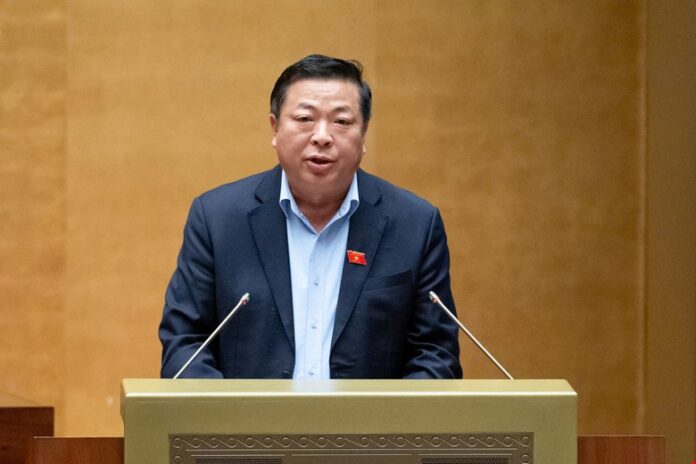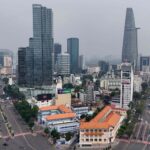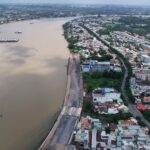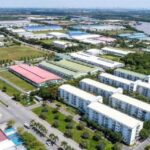Proposed Construction of Ho Chi Minh City’s Ring Road 4
On the afternoon of June 12, at the 9th session, on behalf of the Prime Minister, Minister of Construction Tran Hong Minh presented to the National Assembly the investment policy for the construction project of Ho Chi Minh City’s Ring Road 4.
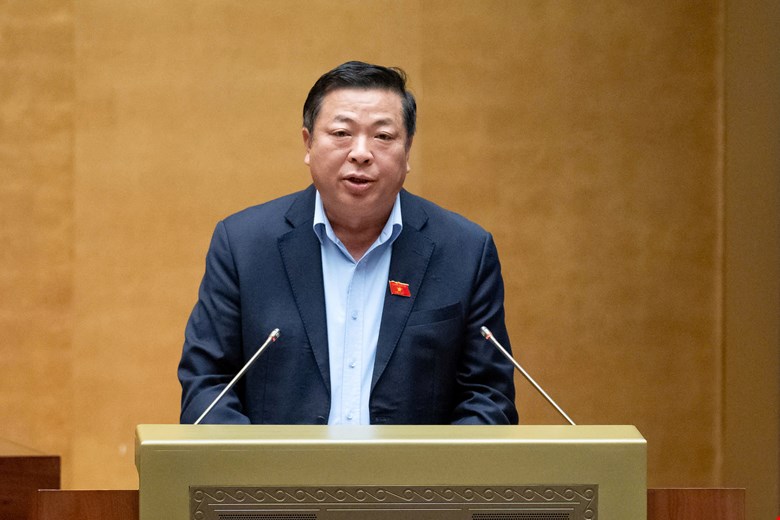
Minister of Construction Tran Hong Minh. Photo: Pham Thang
The total length of the route is approximately 207.26 km, passing through Ho Chi Minh City, Ba Ria-Vung Tau province, Dong Nai province, Binh Duong province, and Long An province (according to the construction plan before the merger of provinces and cities – PV).
According to Minister Tran Hong Minh, the project is expected to connect the radial highways, complete the strategic infrastructure network, reduce inner-city traffic congestion, promote socio-economic development, and create new momentum for satellite urban areas such as Nhon Trach (Dong Nai), Thu Duc (Ho Chi Minh City), Thuan An (Binh Duong), and rural areas such as Cu Chi, Hoc Mon, Binh Chanh, and Ben Luc (Long An).
The preliminary total investment for the project is over VND 120,412 billion, including central budget capital, local budget capital, and mobilized capital. The mobilized capital accounts for about VND 50,632 billion (42.05%).
The project is expected to be prepared and implemented from 2025 and completed and put into operation in 2029. The component projects will be invested in the form of PPP, with a Build-Operate-Transfer (BOT) contract, and will be applied with investment assurance mechanisms and revenue-sharing mechanisms in accordance with the law on investment in the form of public-private partnerships.
The Government proposes that the project be applied with special mechanisms and policies on mineral exploitation for construction materials; on investment procedures and processes; and on designated bidding for consulting, non-consulting, consulting packages for adjusting planning to serve the project, and packages for site clearance compensation, support, and resettlement housing construction.
Presenting the verification report, Mr. Phan Van Mai, Chairman of the National Assembly’s Economic and Financial Committee, agreed on the necessity of investing in the project to create a breakthrough in developing and modernizing transport infrastructure, connecting industrial parks, seaports, and international airports.
At the same time, it will open up new economic development space, create a driving force, and contribute to improving the quality, efficiency, and competitiveness of the Vietnamese economy in general and the localities where the project passes through in particular.
According to the pre-feasibility study report, the route of the project has some sections adjusted compared to the approved planning. Therefore, the verifying agency proposed to explain and analyze more clearly the advantages and disadvantages of each route option to choose the optimal route, ensuring that it is suitable for the terrain and efficient for project investment.
The verifying agency requested the Government to carefully review and calculate the allocation of traffic flow along the entire route to arrange suitable intersections in accordance with current regulations, ensuring safety during operation and optimizing the total investment of the project.
“Long An: The Surge of Investment with the Activation of Belt Road 4”
The latest updates on the progress of Belt Road 4, a vital transportation artery connecting five provinces in the South-Eastern region, have sparked a wave of real estate investments in the areas through which the project traverses. With the longest stretch of the route, Long An province has emerged as the focal point for attracting capital.
The Merger: Unveiling the Province with the Most Industrial Parks in Vietnam
The industrial landscape of Vietnam has witnessed a shift, and Dong Nai is no longer the province boasting the highest number of industrial parks.

